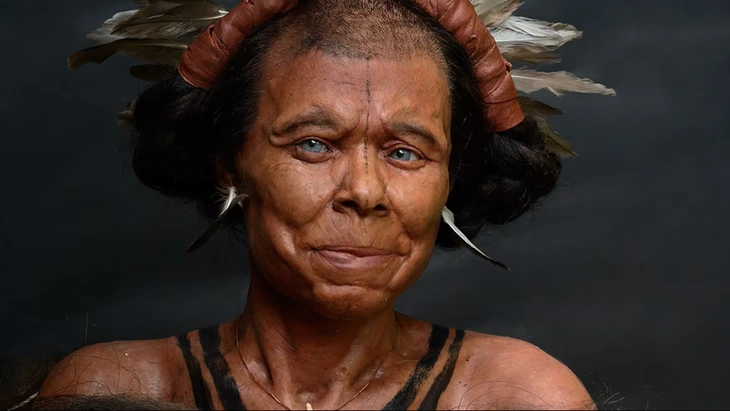
Woman has lighter skin than scientists previously thought - Photo: KENNIS & KENNIS
A group of scientists at Ghent University (Belgium) are studying a woman who lived 10,500 years ago in what is now Belgium, according to CNN on June 19.
Her remains were discovered in the Margaux Cave in the city of Dinant during an excavation in 1988-1989 along with the remains of eight other women. This was an unusual find since most Stone Age burial sites contained a mixture of men, women and children.
Another interesting thing is that this burial cave was used for hundreds of years despite the fact that these prehistoric people lived a nomadic hunter-gatherer lifestyle.
“These findings reveal complex burial customs and raise interesting questions about the social structure and cultural practices of this prehistoric hunter-gatherer community,” said Isabelle De Groote, an archaeologist at Ghent University.
Based on the skull, the team concluded that the woman was between 35 and 60 years old, had a high nose bridge and thick eyebrows. However, when her remains were found, there was no way to conduct ancient DNA research.
Fortunately, current techniques have made this possible. The team was able to extract “quite good quality” DNA from the woman’s skull, allowing them to create “a very detailed reconstruction.”
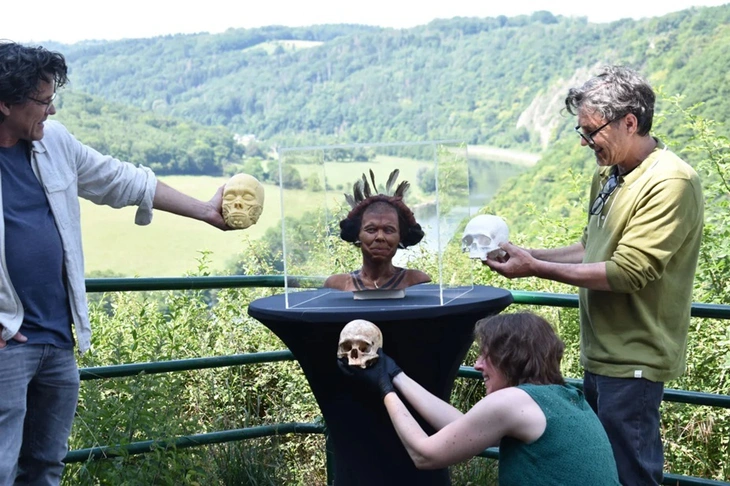
Reconstructed image of the face of a 10,500-year-old woman - Photo: GHENT UNIVERSITY ARCHAEOLOGY DEPARTMENT
Her skin tone, hair color, and eye color were all based on this DNA, while other elements such as jewelry and tattoos were based on archaeological data from other excavations in the Meuse basin. All of this helped the team build a picture of the woman's daily life.
After reconstructing her face, they discovered that the woman had blue eyes and lighter skin than most Stone Age people in Western Europe analyzed to date.
Ms De Groote said the woman belonged to the same group as the Cheddar people - who lived in what is now England at the same time but had lighter skin.
The discovery challenges previous assumptions that European hunter-gatherers had a similar genetic makeup, and demonstrates that there is significant variation in skin color between different populations.
Many questions remain about these Stone Age communities. They were the last hunter-gatherers in Western Europe. The team is now analyzing the remains to establish relationships between the people buried together in Margaux Cave, as well as studying their fish diet.
Source: https://tuoitre.vn/tai-tao-khuon-mat-nguoi-phu-nu-10-500-nam-tuoi-20250620112644484.htm


![[Photo] Prime Minister Pham Minh Chinh chairs the national online conference on combating smuggling, production and trade of counterfeit goods.](https://vphoto.vietnam.vn/thumb/1200x675/vietnam/resource/IMAGE/2025/6/23/4a682a11bb5c47d5ba84d8c5037df029)




![[Photo] Prime Minister Pham Minh Chinh holds meeting to launch exhibition of national achievements to celebrate 80th National Day](https://vphoto.vietnam.vn/thumb/1200x675/vietnam/resource/IMAGE/2025/6/23/0c0c37481bc64a9ab31b887dcff81e40)


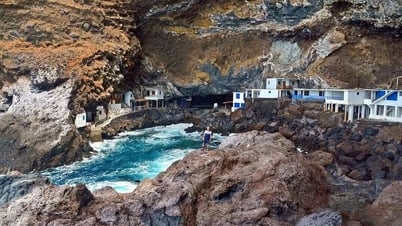



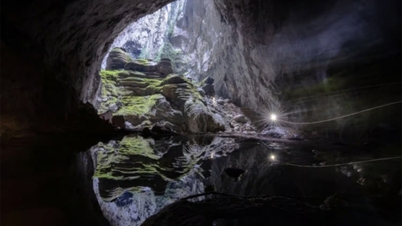






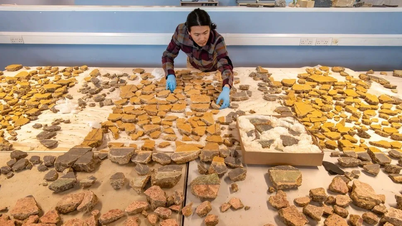




![[INFOGRAPHIC] Delacour's langur "revives" in Trang An](https://vphoto.vietnam.vn/thumb/402x226/vietnam/resource/IMAGE/2025/6/23/7ce6071e3a134f0c92ed4f2d591436e7)









![[Photo] Party Congress of the Central Internal Affairs Commission for the 2025-2030 term](https://vphoto.vietnam.vn/thumb/1200x675/vietnam/resource/IMAGE/2025/6/23/5bf03821e6dd461d9ba2fd0c9a08037b)



































































Comment (0)